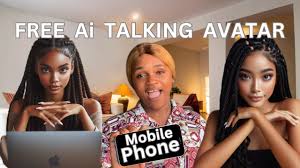Talking Photos: The Best Thing to Happen Since Sliced Bread in Storytelling!
Talking photos are turning the world of storytelling on its head by mixing visual with audible. This incredibly innovative technology is not just fun but it can also be a learning tool and engage audiences in ways traditional mediums cannot. Talking pictures provide a very instructive marriage of sound and image, making full use the often immediate representation provided to us through sight (as noted previously).
Relatability Dimension (enhancement) Emotional Engagement
It is about how a talking photo can say more with an emotional hook. Voice, music and sound effects are all a great way to add depth using the audio method of storytelling that draws your audience further in. In 2023, research from the Digital Media Association found that multimedia presentations with talking photos can increase user interaction by 50% over text or static images alone. This increased engagement is especially useful in storytelling, since authenticity lies at the heart of emotional connection.
Encourage multisensory learning and retention.
These speaking photos are especially valuable for educational purposes. It uses the multisensory learning tactic which is when information is presented visually and audibly it tends to get stored better. Educational research has reported that some people retain as much as 10% of what they read but up to 65 percent from multimedia presentations. Thus talking photos are perfect for educational stories where the focus is not just on making people look, but actually communicating something so a high degree of retention rate with fact-supported information counts.
Accessibility Features
In addition to all of the above, talking photos make stories more accessible. The narrative information needed to understand a story is supplied by the audio of a talking photo for individuals who are blind or visually impaired. The images, however, are so vivid that they can tell a rich story with or without sound-allowing even those who cannot hear the sounds to understand most of this narrative-as long as captions have been added. The two-tiered method does guarantee that the stories will make it in front of a wider group, one that may mostly satisfy differing solicitations and inclinations.

Personalization of Experience
With talking photos, you can get personal into each moment in a way that traditional storytelling methods cannot offer. By the way, that is not to say creators can craft stories in such a parochially personalized manner for each audience member - every singular storytelling experience will necessarily be unique. This adds a human element to the story, making it more relatable and meaningful for viewer - ultimately leading users with stronger bond between him/her & that in-common-story.
Onward in Distinguished igital Storytelling
Talking photo are going to grow in importance as the digital technology advances. That includes things like interactive video experiences, and future innovations that allow audiences to have a say in how stories play out. This interaction could potentially change the way we tell stories as we attend more dynamic and participatory events.
In sum, voice photos transform storytelling. They accomplish that by weaving together audio and video for a more immersive, memorable, and accessible storytelling experience. As with any developing technology, we can expect to seen the future of VR emerge as a more integral part of educational content, high budget Hollywood productions or even in personal storytelling-all tools that will continue to enrich our collective experience as humans who tell stories.